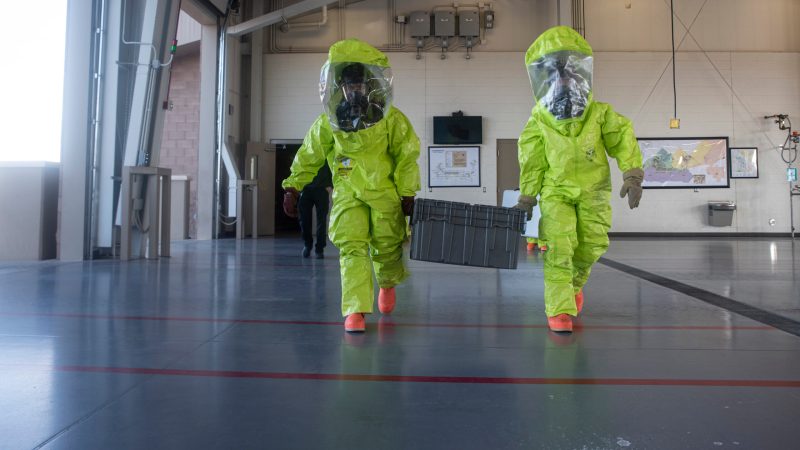Ships at sea have long had to contend with efforts to sink them. Traditionally, this was done by busting holes in the hull to let water in. Another way of putting a ship on the bottom of the ocean floor is to set the ship on fire (which would often cause explosions, blowing holes in the hull).
The two act in combination at times — just look at the saga of USS Liscome Bay (CVE 56) for one such case.
These days, however, threats to ships have become much more diverse and, in a sense, non-conventional. Chemical, biological, radiological, and nuclear (CBRN) weapons have emerged as threats to seafaring vessels.

Marines train for a chemical weapons attack on civilians. While chemical weapons have often been used on land, they can also be used against ships.
(DoD photo by Senior Airman Daniel Owen, U.S. Air Force)
Nuclear weapons are obvious threats. If a ship is in very close proximity to the detonation of such a weapon, it’d quickly be reduced to radioactive dust. Further out, the blast wave and extreme heat would cause fires and do serious damage. Don’t take my word for it, check out Operation Crossroads. In a test, two nuclear blasts sank a number of retired ships, including the Japanese battleship Nagato and the aircraft carrier USS Saratoga (CV 3) that had survived many battles in World War II.
Chemical, biological, and radiological threats, though, are a bit more insidious. They don’t do direct damage to the warship, but can kill or incapacitate the crew. A warship without a crew faces some serious trouble. Thankfully, there’s a way to detect and mitigate such threats.

The Baker shot from Operation Crossroads — with the Japanese battleship Nagato on the left.
(US Navy)
Currently, a Finnish company known as Environics is developing gear that monitors for CBRN threats. Once the alarms sound, the ship’s crew can then seal off the ship into a citadel. Afterwards, the decontamination process can begin.
While the use of chemical and biological weapons has been banned by international treaties, recent events in Syria show that, sometimes, political agreements don’t hold weight. Thankfully, systems like those from Environics will crews potentially in danger a way to protect themselves.


















